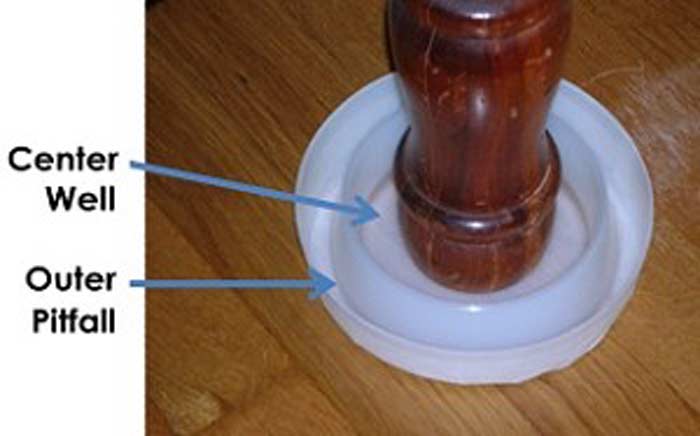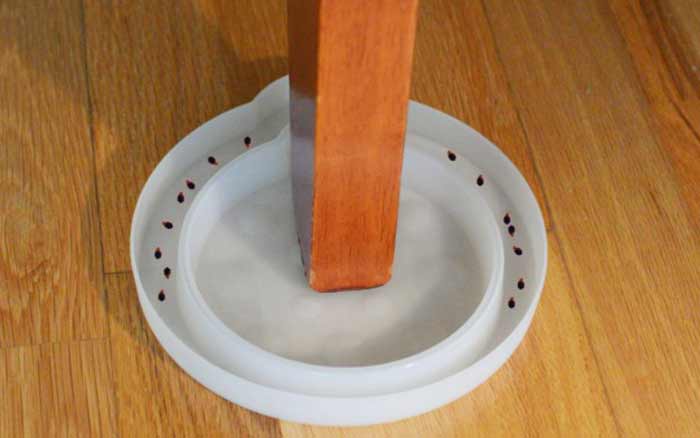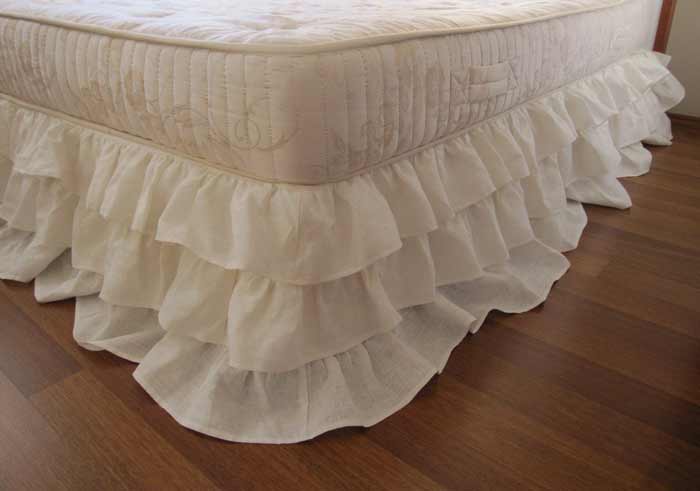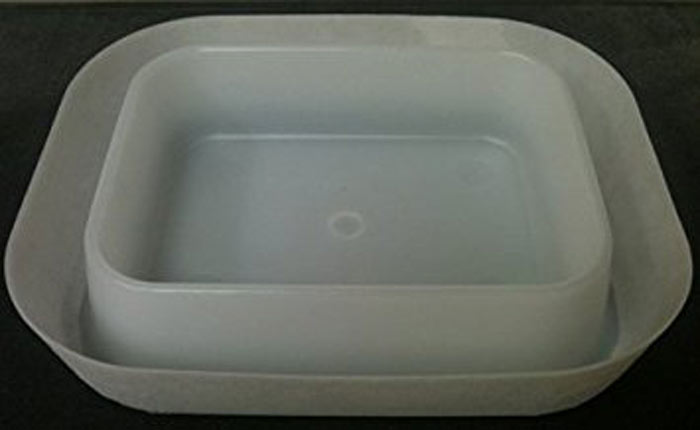Interceptors are simple devices that can help to monitor and control bed bugs. Herein, learn how these devices work, pros and cons plus steps to do create your own- DIY homemade bed bug interceptor
In addition, find reviews of the available commercial interceptors to help you make an informed decision before buying.
Table of Contents
What is a Bed Bug Interceptor?
It is a device made to monitor and manage bed bugs. It relies on the principle that bed bugs lack the ability to climb vertical surfaces that are slippery.
This technique is used by the pest control companies to check the presence of bed bugs in empty houses and apartments.
This device is made up of cups which consist a plastic dish that is huge enough to hold the posts or stands of a couch or bed.
The outer layer of the dish, often referred to as the moat, is what does the function of trapping and keeping hold of the insects. It is probably where they get the name pitfall traps
Often,other substances such as talcum powder are added to the moat to make it harder for the bugs to get away.
It is important to note this method cannot fix an entire infestation of bed bugs.
It is a control measure that can help prevent or stop the bugs from getting to your bedding or couches.
The effectiveness will depend on how use it. If it for monitoring purposes then when used appropriately, the results are substantial.
Pros and cons
The following are some of the advantages that come with the use of interceptors.
- It enables early detection of bed bugs and thus easier control.
- Compared to other control methods, it is cheap
- In most cases, homemade pitfall traps do not contain toxic chemicals.
The disadvantages that come with the use of interceptors is that most of them only provide monitoring and nothing more.
How they work
The interceptor has two surfaces; the rough surface and the smooth surface.
On the rough surface, the bed bug is able to climb the interceptor while the smooth surfaced moat prevents the bed bug from escaping. The bed bugs once they find themselves in the interceptor, they cannot find their way out.[1]
The interceptors are placed under the bed posts or any other place provided it is below the bed. You can also place them under posts/stands of any other furniture where bed bugs are likely to hide.
Once placed here in these positions, you can be able to monitor and take action.
The interceptor also works best when you put it in the sleeping room where the occupants release carbon dioxide that is an attractant.
For improved results, you can as well incorporate carbon dioxide in the interceptor. However, remember that this gas is toxic especially when used in rooms with limited space. Therefore, it should be used only when occupants are away
Ensure there is no bedding touching the floor as this may provide away for the bug to get to your bed.
In the course of time, it has been established that bed bugs are also found in other places apart from the bedroom.
They can also be found in the kitchen, bathrooms and halls. Therefore, consider these places when installing it.[2]
Homemade Bed Bug Interceptor-DIY
- DIY guide on how you can make an interceptor at home
You will need;
- A small container that you can easily fit under your furniture e.g. a food storage container.
- A larger container that the smaller one will fit in.
- A rough tape like the masking tape
- Hot glue if possible super glue
- Talcum powder
- Car polish
- A square-sized plywood
Steps
- Cut the tape into four pieces. Put the pieces high on the wall of the smaller container
- Spread out the pieces and then press them firmly on the inside of the container on a vertical orientation, on the inside of the container.
- Cover the entire exterior surface of the larger container using the tape, so as to ensure that the entire container is covered from the base to the upper part.
- Using glue, stick the smaller container into the larger container on the bottom side.
- Make the surfaces so smooth so that the bed bugs cannot run away. Take some polish or talc powder and apply on the interior side of the large container and the exterior surface of the smaller container. If you choose talc powder, do not touch the do not touch the surfaces that are dusted using your bare hands.
DIY Video
Buying Guide
The bed bug interceptors are available in the insect control stores. There are some companies that sell their merchandise online.
The most famous manufacturers of the device include Blackout™ and ClimbUp®.
Other designs are also hitting the market and they include Volcano™ which is made to include a lure for the bed bugs thus increased effectiveness. It is however only designed for monitoring because of its size.
If you are not able to buy the detectors from the platforms, then you can use the locally available equipment to make one for yourself as shown above.
Tips to buy the best
- When buying a bed bug interceptor, the first thing to look at is the size. Buying an overly large interceptor may not be effective in the long run.
- You should also look at the features that constitute the interceptor
- The brand or type of interceptor is also important. This will give you the chance to choose an authentic and not a fake product.
Reviews
The reviews by users of the bed bug interceptors vary from one type to the other.
For instance, the Climb Up interceptor is made using a thin layer of talc and this helps it to trap bed bugs.
It is surrounded with a dual system that can indicate where the bed bugs are coming from; furniture of outside. It is used on anything that has legs or stands e.g. tables, chairs and beds as well as clothing racks and sofas.
The lights out bed bug interceptor was developed by a scientist, Jeffery White, of the Bed Bug Central. It is very useful because it is can withstand a lot of weight.
Based on reviews from various users, its black color is appealing to the bed bug and thus highly effective. It can hold the legs of the bed bugs with up to a diameter of 9.5 cm.
The Climb Up Interceptor XL is known to be the largest on the market. It is made specifically for the bed bugs with non-conventionally bigger legs. Many users use this for the couches that are prone to bed bugs.
Further Reading
- How to get rid of Bed Bugs on Clothes-Can they Live, Bite through or Travel on Laundry
- Fumigation for Bed Bugs-Cost & Preparation
- How to get Bed Bugs out of Carpet with Cleaner & Powder
- How Long do Bed Bugs Live Without Food, Host, Air, in Cold & After Spraying
- Bed Bug Rash on Skin, Pictures, Treatment, Allergy & Symptoms
- Where do Bed Bugs Hide and how to Find them
- Mosquito Bites vs Bed Bug Bites-What’ are the differences
- Identifying Bed Bug Eggs- How they look like, Images & destruction
- How do you know if you have Bed Bugs-Symptoms & Signs
- Bed Bug vs Spider Bites- Differences with Pictures
- Bed Bug Sniffing Dogs-How they smell, Sense, Roscoe, Breeds & Cost
- What are Bed Bugs? Names in other Languages
- Where do Bed Bugs come from? Causes, how you get them & Start
- How to Kill/Get Rid of Bed Bugs Fast Yourself Naturally for Good
- Bed Bugs in Hair Symptoms, Pictures & Get rid
- Types of Bed Bugs
- Bed Bug Poop/Droppings-How it looks like, Pictures +Identification
- Bed Bug Shells, Cast Skin & Exoskeleton
- Can you See Bed Bugs with the Naked eye? Pictures, Size, Color & Anatomy
- Dust Mite vs Bed Bug Bites
- Bed Bug life cycle-Eggs, Baby(Nymph) to Adult Stages & Pictures
- How to Detect Bed Bugs-Detectors, Light & Verifi Reviews
- How to know if Bed Bugs are gone after Treatment & what to do
- Will Bleach Kill Bed Bugs-How does it work?
- Best Bed Bugs Traps- DIY Homemade, Co2, Yeast + Reviews
- How to Deal with Bed Bugs in your Car
- Bed Bugs in Couch-Covers, Signs & How to Get rid
- How to Kill Bed Bugs with Steam: Best Steamers & Guide + Tips
- Does Alcohol Kill Bed Bugs? Rubbing, Isopropyl & Percentage
- How Long do Bed Bug Bites Last, Take to Appear, Go Away & Heal
- Natural Predator of Bed Bugs-What Insects/Bugs eat Bed Bugs?
- Can Bed Bugs Live in TVs & Other Electronics? How to get them out
- Do Bed Bug Bites Itch or Hurt?
- Bed Bug Interceptor-How it works, DIY & Reviews
- What do Bed Bug Bites look like? Pictures & Identification Steps
- What Attracts Bed Bugs & things they Hate /Dislike Most
- Can Bed Bugs make you Sick? How are they Dangerous?
- Can Bed Bugs Fly-Do they have Wings-How Far can they Travel
- Diatomaceous Earth for Bed Bugs-How to Use & Best Reviews
- DIY Bed Bug Heat Treatment: Success Rate,Temperature Chart, Preparation & Reviews
- Does Vinegar Kill Bed Bugs? Can it be Used for Bites?
- How to Get Rid of Bed Bugs on Mattress- Best Covers, Protectors & Encasement Reviews
- Can Bed Bugs live on or Bite Dogs & Cats (Pets)?
- Bugs that look like Bed Bugs-Beetles & Others that Resemble or Mistaken
- Bed Bug Bombs-Do Foggers work? Effectiveness & Reviews
- Bed Bug Repellents -Natural Homemade, Creams, Electronic & Reviews
- How do Bed Bugs Spread? Are they Contagious? How Fast/Easily from Person, Room or House?
- Best Bed Bug Sprays-DIY Homemade, Natural, Brand Reviews
- Flea Bites vs Bed Bug Bites + Differences & Pictures
- How to Prevent Bed Bugs-Bites while Sleeping at Home, School, Hotel & Travelling
Sources
[1] http://edis.ifas.ufl.edu/in1022
[2] https://citybugs.tamu.edu/factsheets/biting-stinging/bed-bugs/ent-3012/



